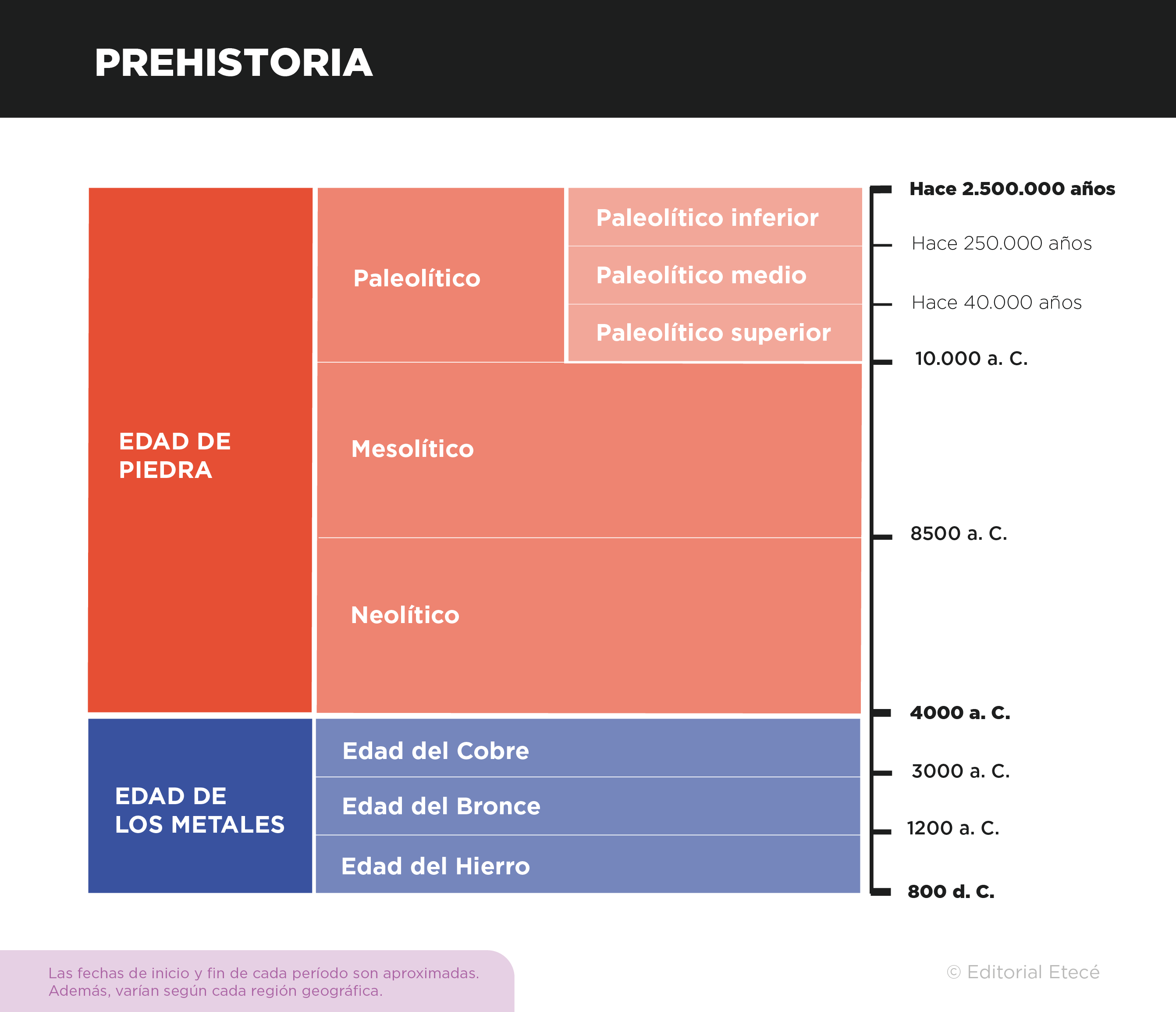We explain what the Paleolithic was, what the main events of this period were and what its temporal division is like.

What was the Paleolithic?
The Paleolithic period It was the longest and oldest stage of human existence (99% of the species' time on the planet). It spanned from the appearance of the first species of the genus Homo (of which the Homo sapiens is the last and only survivor), about 2.58 million years ago in Africa, until the Mesolithic period and then the Neolithic period began, approximately 12,000 years ago.
The name of this period comes from the Greek words palaios (“old”) and lithos (“stone”), and was created by the English archaeologist John Lubbock in 1865. It means “ancient stone.” Along with the periods Mesolithic (“middle stone”) and Neolithic (“new stone”), constitute the Stone Age called that way because human beings made their weapons and utensils mainly with different types of stone, unlike later ages in which they incorporated metal work (grouped in the so-called Age of Metals).
During the Paleolithic, Human beings were nomadic, they dedicated themselves to hunting, gathering and fishing, they made their own tools with stone, bone and some plant fibers and they learned to control fire. They belonged to various human species, such as Homo habilishe homo ergasterhe Homo erectushe Homo antecessorhe Homo heidelbergensis and the Homo neanderthalensisall of them extinct, and finally the Homo sapiensthe only human species that did not become extinct.
Numerous archaeological finds were made corresponding to the Paleolithic period, such as remains of more or less intact human bones and lithic weapons or tools. Besides, Paleolithic artistic or religious representations were found, like cave paintings (among them, those from the Altamira cave from 36,000 to 22,000 years ago) or the so-called paleolithic Venuses (female statuettes whose most significant example is the Venus of Willendorf from 25,000 years ago).
From approximately 30,000 years ago, the remains found correspond exclusively to the Homo sapienscapable of more complex forms of abstract thought and cultural practices than the other species.
Key points
- The Paleolithic was the period of prehistory that began 2.58 million years ago with the origin of the genus Homo and inaugurated the Stone Age.
- It ended between 12,000 and 8,000 BC. C. (depending on the region), when the Mesolithic period began, which later gave way to the Neolithic.
- It was characterized by the existence of several human species that are now extinct, such as Homo habilis or Homo neanderthalensis, and by the appearance of Homo sapiens.
- Paleolithic groups were nomadic, made stone tools, relied on hunting, fishing and gathering, and made figurines and cave paintings.
See also: Prehistory
Temporal division of the Paleolithic

The Paleolithic period roughly coincides with the Pleistocene geological era and is normally divided into three subperiods:
- Lower Paleolithic. It began with the manufacture of the first stone tools by the Homo habilis 2.58 million years ago and ended 250,000 years ago.
- Middle Paleolithic. It began 250,000 years ago, was characterized by the generalization of the domain of fire and culminated approximately 40,000-30,000 years ago.
- Upper Paleolithic. It began 50,000 or 40,000 years ago with the appearance of more sophisticated tools and ended between 12,000 and 8000 BC. C., which put an end to the Paleolithic period.
This periodization is subject to review and It is considered valid only for Europe and the closest areas of Africa and Asia although even in these continents it varies depending on the region. On the other hand, recently evidence was found of the use of stone tools prior to the appearance of the Homo habilisat a 3.3-million-year-old site in East Africa, suggesting that one of the features of the Paleolithic (tool making) existed earlier.
References
- Braidwood, R.J. et al. (2023). Stone Age. Encyclopedia Britannica. https://www.britannica.com/
- Britannica, Encyclopaedia (2024). Paleolithic Period. Encyclopedia Britannica. https://www.britannica.com/
- Fernández Martínez, VM (2007). Prehistory. The long road of humanity. Alliance.





